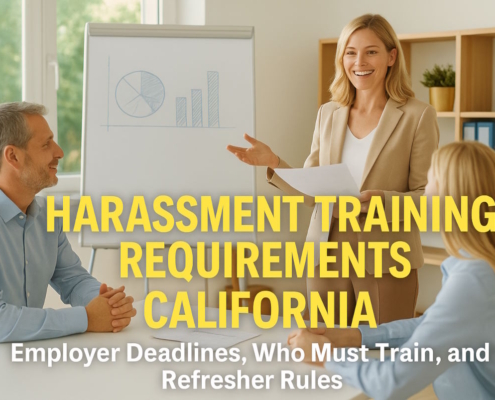Introduction
In order to establish a minimum requirement for Paid Sick Leave throughout the state, the California legislature approved SB 616 (Senate Bill No. 616), a revision to the Healthy Workplaces, Healthy Families Act of 2014. This is in the wake of local municipalities in California passing individual paid sick leave legislation in recent years to establish minimums for accumulation of paid sick leave, resulting in a patchwork of requirements for California enterprises with numerous locations.
Beginning on 1st January 2024, the latest California Paid Sick Leave law (SB 616) was enforced. Apart from railroad carrier firms, almost all Californian enterprises with workers are impacted. This means that companies will have to assess and, if needed, modify their sick leave practices to ensure adherence.
An Overview of the Current California Paid Sick Leave Law (SB 616)
The following modifications to the state’s sick leave laws are outlined in SB 616:
- For full-time workers, the state PSL minimum has been raised from 24 hours (three days) to 40 hours (five days).
A minimum of 40 hours or five days, whichever is greater, must be used by an employee.
a) An employee who works 10 hours a day, for instance, is allowed to use at least fifty hours of paid time off for sickness.
b) On the other hand, if a worker puts in only six hours per day and takes five days of paid time off for illness, they will still have ten hours left out of a total of thirty.
c) These examples presuppose that the worker has accrued or been paid for their entire leave balance up front.
- Both full-time and part-time workers are required to accrue at least one hour of PSL for every thirty hours of employment.
- Ninety days after the worker’s employment begins, employers are required to permit them to use their allotted sick leave.
- Employers are unable to prevent workers from using fewer than 40 hours of their accumulated PSL annually.
- Employers are able to raise the limit on PSL accumulated hours from forty hours (five days) to eighty hours (ten days). When an employee utilizes part of their PSL after reaching the 80-hour (10-day) maximum accumulation, they keep accruing until they hit the 80-hour (10-day) maximum.
- Employers are not allowed to carry over less than forty hours of PSL to the following year. (If any PSL is accumulated but not used, employers are required to roll over at least 40 hours to the next year.)
- If an employee has worked in California for a particular company for 30 days or more in a year after beginning work, they have the right to paid sick days.
- Employees must get written information from their employers about their eligible PSL balance, such as by having the present level shown on the pay stubs.
- The paid sick leave laws of any local cities that have a lower requirement than the current state requirement are superseded.
- There are three ways that employers might include PSL within their policies:
a) 1/30 accrual computation using state guidance
b) Lump sum
c) Custom accrual computation
- Employers must adhere to additional requirements of SB 616 if they apply a proprietary calculation regarding PSL accrual, such as:
a) It is mandatory for workers to receive three days of paid sick leave by the 120th day of work.
b) By the 200th day of employment, workers must get an extra 16 hours of paid time off for illness, for a total of forty hours.
c) Sick time use may be restricted by employers to forty hours (five days) per year or a 12-month term.
The text of SB 616 also describes safeguards against retaliation, covers how the law applies to companies that use alternative accrual techniques, and goes into great detail about how the new modifications to California Paid Sick Leave affect workers bound by collective bargaining agreements.
Five steps California companies need to take to prepare themselves as the extension of the paid sick leave takes place
Companies operating in California will be required to keep up with the fast-changing world of law in order to ensure their operations can operate smoothly and remain within the laws of the ever-changing California labor laws.
- It is important to ensure that the existing policies on sick leave are not in contravention of the new statewide policy in California by undertaking critical assessments and revising them.
- Update your employment handbook (by 1st January 2024) and inform/train your staff about the upcoming changes.
- There are new laws/regulations of SB 616, which everyone should be aware of and know how to implement. To ensure that, train your HR professionals and employees.
- Make sure the payroll & recordkeeping systems can precisely manage and record sick leave accruals and keep track of every worker’s sick leave accruals and usage.
- To make sure that your procedures and policies completely adhere to SB 616, go over the latest legislation with your business’s payroll processor and, if needed, consult with HR & labor law specialists.































